Who is Satoshi Nakamoto? This article will provide intriguing information about Satoshi Nakamoto and the creation of Bitcoin by this mysterious figure
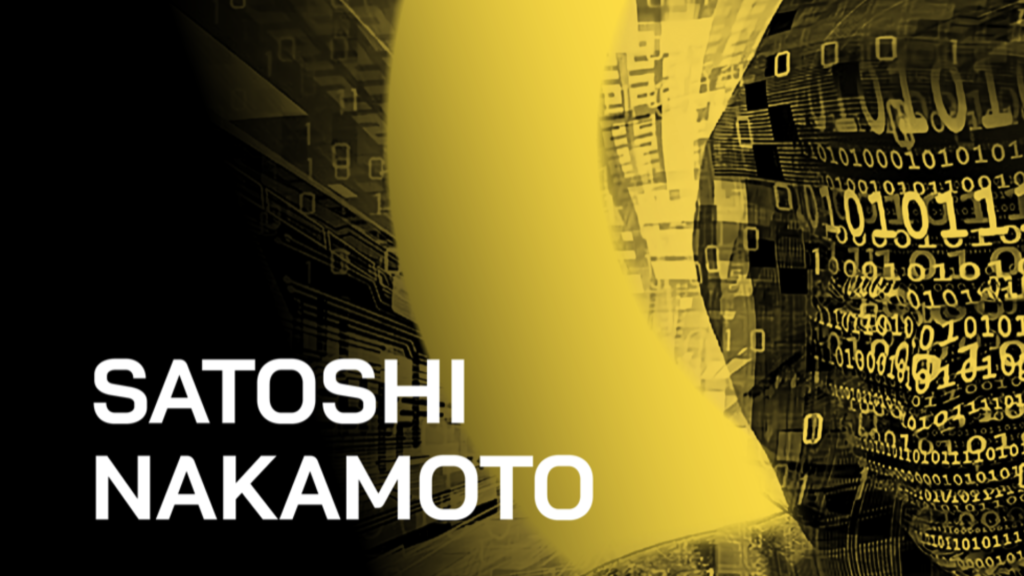
On the day before Thanksgiving in 1971, a man in his 40s using the alias D.B. Cooper boarded a flight in Oregon, USA, and told the crew he had a bomb in his briefcase. After demanding $1.2 million in ransom, he parachuted out of the plane and disappeared. The identity of this infamous hijacker has never been uncovered.
Nearly 40 years later, in 2009, a self-proclaimed 36-year-old Japanese man emerged on the world’s financial “flight.” But instead of stealing money, this individual “left behind” 21 million Bitcoin, then “parachuted” out, vanishing into Satoshi Nakamoto cyberspace. More than a decade has passed, but efforts to decipher this person’s identity remain stalled. That person is Satoshi Nakamoto.
Who is Satoshi Nakamoto?
Satoshi Nakamoto is the pseudonym of an individual (or group) who created Bitcoin and launched the first blockchain of the same name. Satoshi was very active in Bitcoin’s development until disappearing in December 2010.
Despite the distinctly Japanese-sounding name and Satoshi’s self-proclaimed Japanese nationality, most speculation about Satoshi’s true identity revolves around software or cryptography experts in the US or Europe.
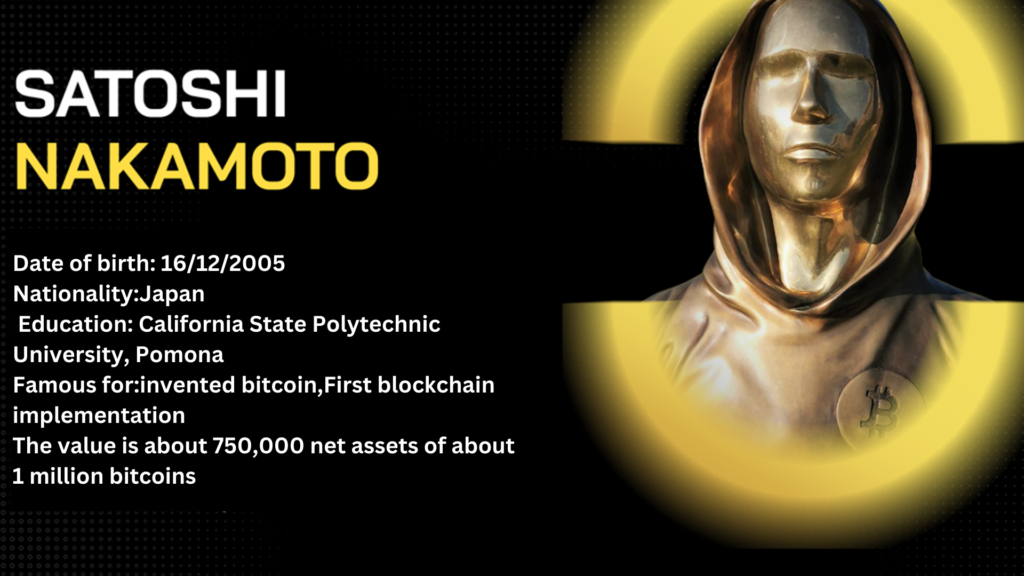
Invented money – Creator of his own path
To get money, most of us have to work our butts off, some of the more daring counterfeit or steal it, but Satoshi Nakamoto chose a different path: inventing money. On the evening of January 3rd, 2009, Satoshi hit a button on their keyboard and created a new currency called Bitcoin. No paper, coins, or silver – just 31,000 lines of code and an announcement on the internet.
Satoshi’s invention has been dubbed “digital gold” because it consists of only 21 million Bitcoin. Miners extract Bitcoin by using computers to solve complex mathematical problems. The fastest computer wins the most Bitcoin.
At first, one Bitcoin was valued at less than 0.01 USD, but merchants gradually began accepting this new currency, and by the end of 2010, its value started to increase rapidly.
The first real-world Bitcoin transaction took place on May 22, 2010, when a man from Florida agreed to trade two pizzas worth 25 USD for 10,000 Bitcoin, and “Bitcoin Pizza Day” was born from this event. Since then, the value of this cryptocurrency has increased exponentially.

If Satoshi Ruled the World…?
The fact that Satoshi remains cloaked in anonymity has led many to question whether Bitcoin’s creator was the mastermind behind a Ponzi scheme. However, it seems Satoshi was driven by political motives rather than criminal ones.
It’s no coincidence that Bitcoin was born in the wake of the 2008 financial crisis, a time when the global financial market was reeling from the collapse of the global banking sector. After the “too big to fail” Lehman Brothers filed for bankruptcy, Satoshi published an essay criticizing traditional currency.
“The root problem with conventional currency is all the trust that’s required to make it work,” Satoshi wrote. “The central bank must be trusted not to debase the currency, but the history of fiat currencies is full of breaches of that trust.”
If Satoshi ruled the world, they would fire the Chairman of the US Federal Reserve, shut down the European Central Bank, and do away with international money transfer services altogether. Because in Satoshi’s new monetary system, central banks and governments play no role whatsoever.

The blockchain Satoshi created allows people to send money directly to each other without intermediaries, and no other party can create additional Bitcoin. “It’s all based on cryptographic proof instead of trust,” Satoshi wrote in a 2009 essay.
And to “hammer home” the manipulation of fiat currency, in the first transaction ever carried out on the Bitcoin blockchain, the mysterious founder embedded a message: “The Times 03/Jan/2009 Chancellor on brink of second bailout for banks.”
The message refers to the headline of an article that appeared that day in The Times of London about a second bailout for banks, implying the British government’s failure to stimulate the economy.

Tested by the Best: Bitcoin’s Trial by Fire
Currently, despite the absence of its “creator,” Bitcoin has affirmed its value. However, at the time of its inception, the currency was subjected to “tests” of its trustworthiness.

When it turned two years old, in early 2011, Bitcoin caught the attention of Dan Kaminsky, a leading internet security researcher. He declared he would investigate the currency and was certain to find major weaknesses in it.
Kaminsky was famous in the hacker community for discovering a fundamental flaw in the internet in 2008 that could have allowed a skilled coder to take control of any website or even shut down the internet.
He had alerted the US Department of Homeland Security, as well as executives at Microsoft, about the problem and worked with them to patch it. He was also one of the world’s most skilled penetration testers – someone who probes computer systems for vulnerabilities. Kaminsky felt Bitcoin would be an easy target.
“The first time I looked at the Bitcoin code, I was sure I could crack it,” Kaminsky said, remarking that Bitcoin’s programming style was dense and difficult to understand. “The whole thing is insanely architected. Only the most diligent, paranoid coders in the world could have avoided making mistakes on this system,” he added.
In his windowless, computer-filled basement in San Francisco, Kaminsky paced back and forth talking to himself, trying to visualize the Bitcoin network in his mind. He quickly identified nine ways to penetrate the system and found a place to insert his first attack.
But when he found the right spot, a message was waiting for him: “Attack Removed.” Kaminsky tried other places, but the same thing happened again and again, leaving him extremely frustrated.

He was like a thief certain he could break into a bank by digging a tunnel, drilling through walls, chiseling through the vault, or climbing down an air vent, only to find with each attempt a freshly poured concrete barrier with a sign telling him to go home. “I’ve never seen anything like it,” Kaminsky said, astonished.
He pointed out the skills Satoshi must have possessed to successfully build Bitcoin. “He’s a world-class programmer, with a deep understanding of the C++ programming language,” Kaminsky said. “He understands economics, cryptography, and peer-to-peer networking. Either there’s a team of people who worked on this, or this guy is a genius.”
Kaminsky wasn’t alone in this assessment. Shortly after creating the new currency, Satoshi posted a nine-page technical paper describing how Bitcoin worked. That paper included three references related to the work of Stuart Haber, a researcher at H.P. Labs in Princeton.
Haber was a director of the International Association for Cryptologic Research, and he knew all about Bitcoin. “Whoever did this had a deep understanding of cryptography,” Haber said. “They’d read the academic papers, they had a good mind, and they were putting concepts together in a completely novel way.”

Rejecting the position of “world changer”
Bitcoin’s value has added many zeros, but Satoshi’s identity remains a big, fat zero to this day. Before Bitcoin’s emergence, there was no record of any programmer with that name. Satoshi used untraceable email addresses and websites. In 2009 and 2010, this mysterious figure posted hundreds of messages in perfect English, and despite chatting with other software developers to get help improving the code, Satoshi never revealed any personal information.
Suddenly, in April 2011, Satoshi sent a message to a developer saying they were “moving on to other things.” Just like that, the masked Bitcoin wizard, cloaked in a digital shroud, vanished into the night of cyberspace like the phantom thief Kaito Kid from the “Detective Conan” series.

Bitcoin has been called a world-changing invention, and naturally, its creator would inherit that mantle, be placed on a pedestal, and celebrated. In today’s tech world, that means money, power, and attention.
As the one who created money, Satoshi probably doesn’t care about having more of it, but power and attention are a potent elixir. So why did Satoshi decline that privilege, content to be a quiet nobody that no one knows?
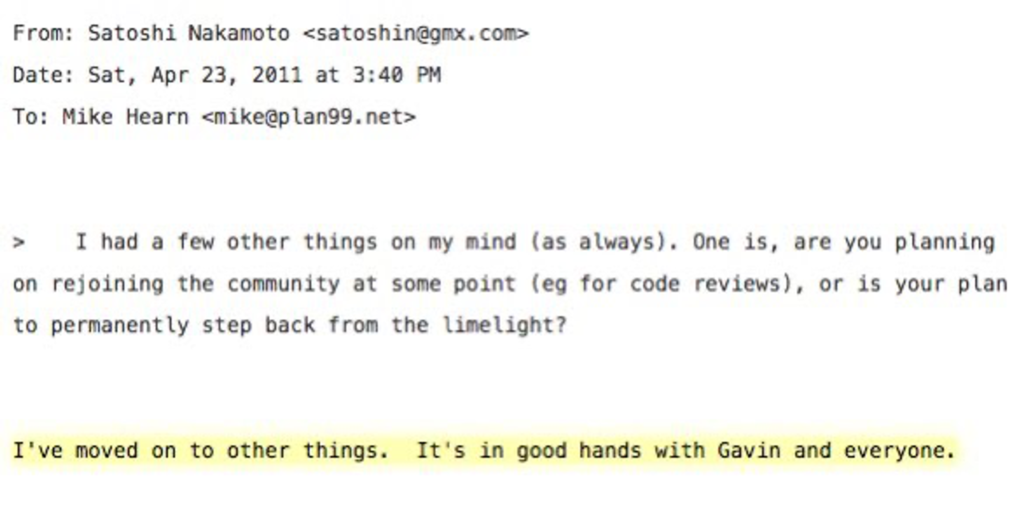
Some might call it a marketing ploy, as mystery always attracts human curiosity and entices people to get involved. But it’s been 13 years since Bitcoin’s creation, and if the founder’s anonymity was a publicity stunt, the campaign has gone on too long and is no longer necessary.
Perhaps Satoshi has a more legitimate reason to conceal their identity: those who experiment with currency, thereby “trespassing” on the sacred ground of institutions, often pay the price.
In 1998, a Hawaiian resident named Bernard von NotHaus began minting silver and gold coins that he called “Liberty Dollars.” Nine years later, the US government charged NotHaus with “conspiracy against the United States.”
He was convicted and put on trial. “It is a violation of federal law for individuals to create private coin or currency systems to compete with the official coinage and currency of the United States,” the FBI announced at the end of the trial.
Online currencies were no exception. In 2007, the US federal government filed charges against e-Gold, a company that sold a digital currency redeemable for gold. The government argued that the project facilitated money laundering and child pornography, as users did not need to provide thorough identity verification. Ultimately, the company’s owner was convicted of operating an unlicensed money-transmitting business, and the CEO was sentenced to months of house arrest. The company quickly went out of business.
Satoshi seemed to be doing the same thing as other currency developers – those who flee from the authorities. Satoshi was competing with the dollar and ensuring user anonymity, which made Bitcoin attractive to criminals. In the winter of 2011, a website called Silk Road was launched, allowing users to buy and sell heroin, LSD, and marijuana as long as they paid with Bitcoin.
But Lewis Solomon, professor emeritus at George Washington University Law School, who studies alternative currencies, argued that creating Bitcoin might be legal. “Bitcoin is in a gray area, partly because we don’t know whether to treat it as a currency, a commodity like gold, or even a security,” he said.
However, gray areas are dangerous, which may be why Satoshi created Bitcoin in secret. It might also explain why Satoshi built the code with the same peer-to-peer technology that facilitates the exchange of pirated movies and music: users connect to each other instead of a central server. There’s no company to regulate, no office to raid, and no one to arrest.tralized architecture of Bitcoin, which mirrors the technology used for illicit file-sharing. With no central authority, there’s no single entity to control, target, or prosecute.

The “Sherlock Holmeses” of the Tech World Take on the Bitcoin Enigma
If the brilliant detective Sherlock Holmes were to step out of the pages of Arthur Conan Doyle’s stories, could he crack the case of the “Bitcoin Wizard’s” identity?
While we let our imaginations run wild with this clash of brilliant minds, real-life “Sherlock Holmeses” have been actively gathering “evidence” about Satoshi Nakamoto. The investigation has drawn in the tech community, programming experts, and even journalists from major US newspapers.
We invite you to read these “investigations” in the article: Unmasking the Bitcoin Wizard: When the “Sherlock Holmes” got involved
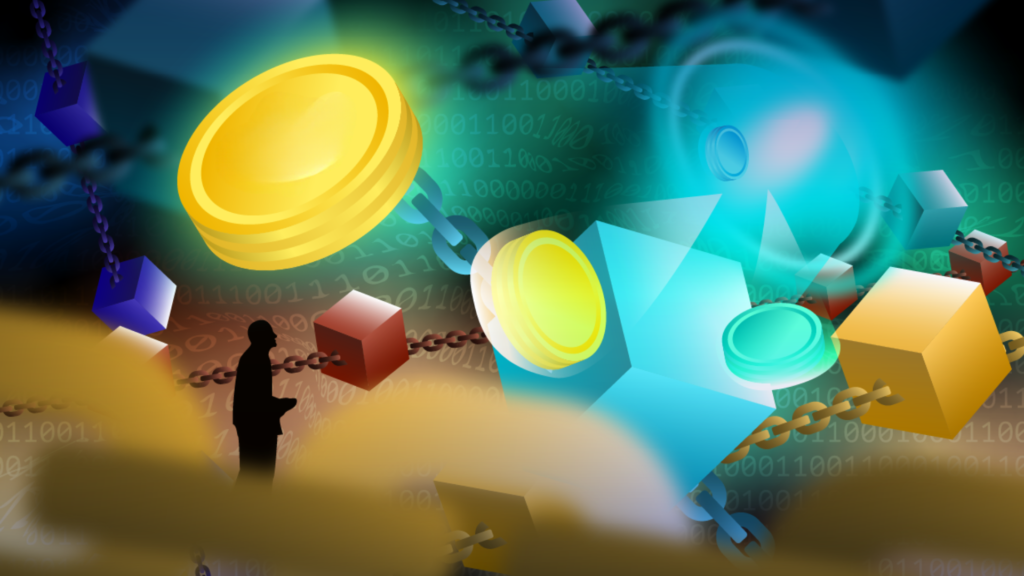
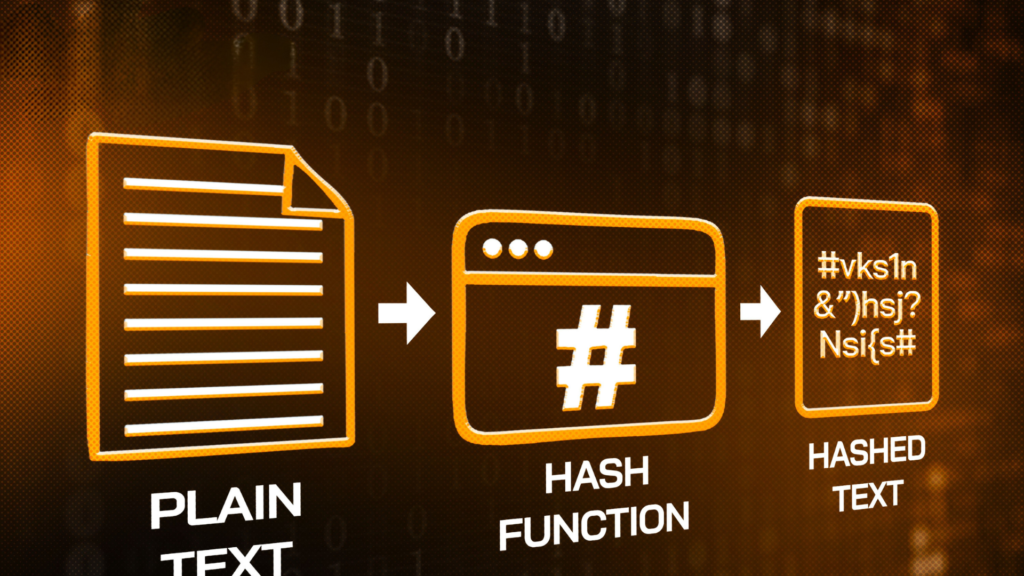
Pingback: Blockchain Technology: A Comprehensive Guide - coinrin.com